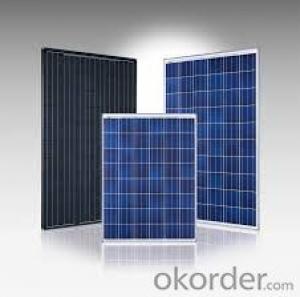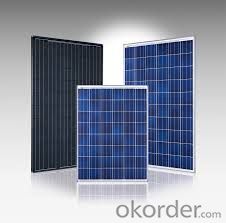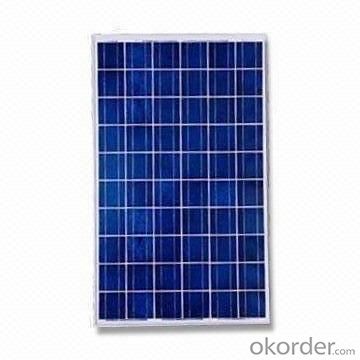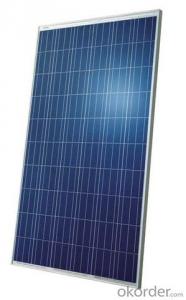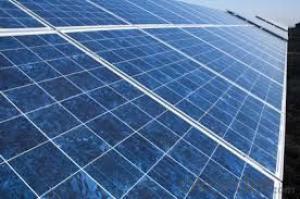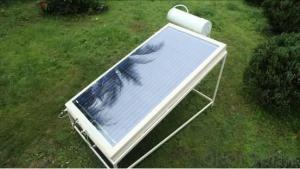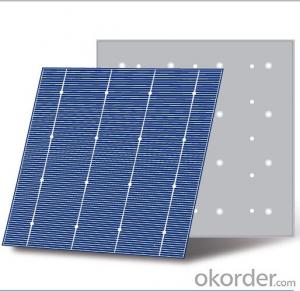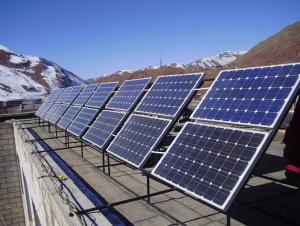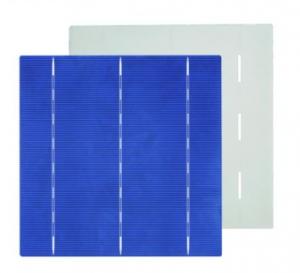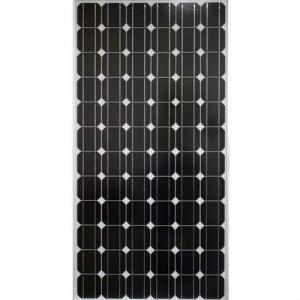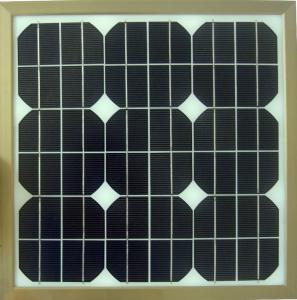Carbon Solar Cells Factory Direct Sale Polycrystalline Solar Panel with High Quality CNBM
- Loading Port:
- Qingdao
- Payment Terms:
- TT OR LC
- Min Order Qty:
- 10 set
- Supply Capability:
- 300000 set/month
OKorder Service Pledge
OKorder Financial Service
You Might Also Like
Polycrystalline Solar Modules
CNBM offers a range of small, medium and large polycrystalline solar modules, designed for a range of requirements.

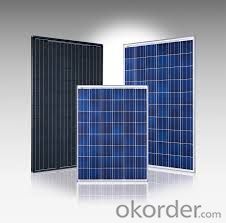
Specifications:
Tolerance | +/-3% |
Cell | Polycrystalline silicon solar cells (156 x 156mm) |
N0. of Cells | 60 (10 x 6) |
Dimension of Modules (mm) | 1650 x 990 x 40 |
Weight (kg) | 25.5 |
Limits:
Operating Temperature | -40~+85? |
Storage Temperature | -40~+85? |
Maximum System Voltage | 1000 VDC max. |
Hail Impact | Diameter of 28mm with impact speed |
Temperature and Coefficients:
NOCT | 48C+/-2? |
Voltage temperature coefficient (%/K) | -0.35 |
Current temperature coefficient (%/K) | 0.05 |
Power temperature coefficient (%/K) | -0.45 |
Characteristics:
Model: | SGM-200P | SGM-210P | SGM-220P |
Max-power voltage Vmp (V) | 29.2 | 29.4 | 29.41 |
Max-power current Imp (A) | 6.85 | 7.14 | 7.48 |
Open-circuit voltage Voc (V) | 36.5 | 36.69 | 36.9 |
Short-Circuit Current Isc (A) | 7.28 | 7.6 | 7.93 |
Max-power Pm(W) | 200 | 210 | 220 |
Model: | SGM-230P |
Max-power voltage Vmp (V) | 29.8 |
Max-power current Imp (A) | 7.72 |
Open-circuit voltage Voc (V) | 37.31 |
Short-Circuit Current Isc (A) | 8.19 |
Max-power Pm(W) | 230 |
STC: Irradiance 1000W/m2, module temperature 25?, AM-=1.5
Poly Crystalline Solar Panels Specifications Range
Maximum Power (Pm) | Dimension | Weight | Operating Voltage (Vmp) | Operating Current (Imp) | Open Circuit Voltage (Voc) | Short Circuit Current (Isc) |
0.45W | 140x80x10mm | 0.08kg | 3.3V | 150mA | 4.6V | 160mA |
1.0W | 162x140x10mm | 0.16kg | 7.5V | 150mA | 10.3V | 160mA |
4.5W | 269x251x23mm | 0.8kg | 16.5V | 0.27A | 20.5V | 0.3A |
10W | 420.1×268.9×22.6mm | 1.92kg | 17.5V | 0.58A | 20.5V | 0.6A |
20W | 425x502x50mm | 3.0kg | 16.8V | 1.19A | 21.0V | 1.29A |
30W | 593x502x22.6mm | 3.9kg | 16.8V | 1.78A | 21.0V | 1.94A |
40W | 655x537x50mm | 5.75kg | 17.3V | 2.31A | 22.1V | 2.54A |
50W | 839x537x50mm | 6.0kg | 17.5V | 2.9A | 21.8V | 3.17A |
65W | 1111x502x50mm | 7.2kg | 17.6V | 3.69A | 22.1V | 3.99A |
80W | 1204x537x50mm | 7.7kg | 17.6V | 4.55A | 22.1V | 4.8A |
- Q: How do solar cells perform in high-pollution areas?
- Solar cells can still function effectively in high-pollution areas, although their performance may be slightly reduced due to the presence of air pollutants. The efficiency of solar cells depends on the amount of sunlight they receive, so in areas with high pollution, the concentration of pollutants in the air may partially block sunlight and reduce the amount of energy captured by the cells. However, advancements in solar technology have led to the development of more resilient and efficient solar panels that can still generate a significant amount of energy, even in high-pollution areas.
- Q: What is a monocrystalline solar cell?
- A monocrystalline solar cell is a type of solar cell made from a single crystal structure, usually silicon. It is known for its high efficiency and uniform appearance, as it is made from a single continuous crystal. Monocrystalline solar cells are widely used in solar panels due to their ability to convert sunlight into electricity effectively.
- Q: What is the impact of solar cells on reducing noise pollution from power generation?
- Solar cells have a positive impact on reducing noise pollution from power generation as they operate silently, without the need for noisy machinery or moving parts.
- Q: Can solar cells be used to power street lights?
- Yes, solar cells can be used to power street lights. Solar-powered street lights harness sunlight through solar panels and convert it into electrical energy, which is stored in batteries. This stored energy is then used to power the street lights during the night, eliminating the need for a traditional electrical grid connection. Solar-powered street lights are an eco-friendly and cost-effective solution for illuminating roadways.
- Q: What is a solar cell?
- A solar cell, also known as a photovoltaic cell, is a device that converts sunlight directly into electricity. It is made up of semiconductor materials that absorb photons from sunlight, creating an electric current. Solar cells are used in solar panels to generate renewable energy for various applications, such as powering homes and businesses.
- Q: How does the photovoltaic cells work?
- Photovoltaic solar cells fulfill two functions: photogeneration of charge carriers (electrons and holes) in a light-absorbing material, and separation of the charge carriers to a conductive contact that will transmit the electricity.
- Q: Can solar cells be used for powering internet connectivity?
- Yes, solar cells can be used to power internet connectivity. Solar cells convert sunlight directly into electricity, which can be used to power various devices, including internet routers and modems. This allows for the provision of internet connectivity in remote or off-grid areas where traditional power sources may be limited or unreliable. Additionally, solar-powered internet connectivity can contribute to sustainability efforts by reducing reliance on fossil fuels and lowering carbon emissions.
- Q: Can solar cells be used for refrigeration?
- Yes, solar cells can be used for refrigeration through the use of photovoltaic (PV) systems. These systems convert sunlight into electricity, which can then power refrigeration units. This allows for the generation of cold temperatures and preservation of perishable goods, making solar cells a viable option for refrigeration in areas without access to traditional power grids.
- Q: What's the relationship between solar energy materials and solar cells?
- Solar cells are used for the direct conversion in changing the light energy into electrical energy. At present, a large number of terrestrial photovoltaic systems are actually made by silicon solar cells, which can be divided into silicon, polycrystalline silicon, amorphous silicon solar cells.
- Q: Can solar cells be used in recreational vehicles (RVs)?
- Yes, solar cells can be used in recreational vehicles (RVs). Installing solar panels on the roof of an RV can provide a sustainable and efficient source of electricity for powering various appliances and devices while on the road. This allows RV owners to reduce their reliance on traditional power sources and enjoy greater freedom and flexibility in their travels.
Send your message to us
Carbon Solar Cells Factory Direct Sale Polycrystalline Solar Panel with High Quality CNBM
- Loading Port:
- Qingdao
- Payment Terms:
- TT OR LC
- Min Order Qty:
- 10 set
- Supply Capability:
- 300000 set/month
OKorder Service Pledge
OKorder Financial Service
Similar products
Hot products
Hot Searches
Related keywords
